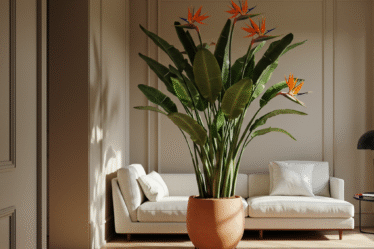
Calatheas, often called prayer plants due to their fascinating leaf movements, bring a touch of the tropics to any home. These vibrant beauties boast intricate patterns and a rich array of colors, from deep greens and purples to striking pinks and yellows. However, their captivating foliage comes with a reputation for being somewhat finicky. Fear not, aspiring plant parents! This guide will unveil the secrets to successful Calathea care, empowering you to nurture these stunning plants and enjoy their mesmerizing display.
One key to happy Calatheas is understanding their natural habitat. Originating from the tropical rainforests of South America, they thrive in warm, humid environments with dappled light. Replicating these conditions in your home is crucial. Maintaining a temperature between 65-80°F (18-27°C) is ideal. Avoid placing your Calathea near drafts or heating vents, as these can cause stress and leaf damage. Humidity is another vital factor. Consider grouping your plants together, placing them on a pebble tray filled with water, or using a humidifier to create a more humid microclimate.
Watering your Calathea correctly is paramount. These plants prefer consistently moist, but not soggy, soil. Overwatering can lead to root rot, a common issue with Calatheas. Allow the top inch of soil to dry out between waterings, and ensure the pot has adequate drainage. Water quality also plays a role. Calatheas are sensitive to chlorine and fluoride often found in tap water. Using filtered or distilled water, or allowing tap water to sit out for 24 hours, can prevent leaf browning and other issues.
Light requirements for Calatheas can be a bit tricky. While they appreciate bright, indirect light, direct sunlight can scorch their delicate leaves. An east-facing window is often the perfect location, providing gentle morning sun. If you notice the leaves curling or the colors fading, it might indicate insufficient light. Conversely, if the leaves appear bleached or develop brown spots, it could be a sign of too much direct sun. Experiment with different locations to find the sweet spot for your Calathea.
Finally, feeding your Calathea during the growing season (spring and summer) can encourage healthy growth and vibrant foliage. Use a balanced liquid fertilizer diluted to half strength every 2-4 weeks. Avoid over-fertilizing, as this can lead to salt buildup in the soil and damage the roots. By following these tips, you can unlock the secrets to Calathea care and enjoy the beauty of these captivating plants in your home for years to come. Embrace the journey of plant parenthood and watch your Calathea thrive!



